Hole in the Clouds
Mar 21, 2011
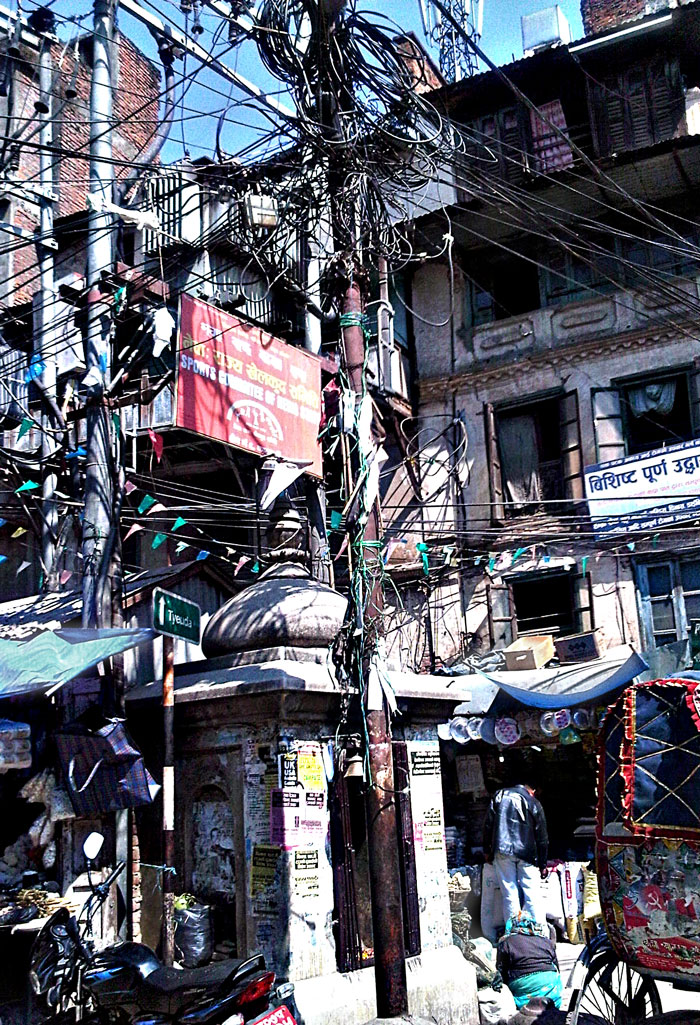 The guidebooks say that Nepal is a "quirky" place, where people use thousand-year-old statues to hold up their clotheslines. The guidebooks are right.
The guidebooks say that Nepal is a "quirky" place, where people use thousand-year-old statues to hold up their clotheslines. The guidebooks are right.
As this photo suggests, Nepalis use a confection of spit and wistfulness to hold up their electrical grid. It works about as well as you'd guess. In the capital city of three million people there is not a single functioning traffic light.
After spending four days knocking about in Kathmandu and another week trudging very slowly through the Himalayan foothills, I filled up my camera with curiosities and have of course become an expert on all things Nepalese. I've got stuff to share in upcoming G'mornin's. But the world has gone on spinning, so Kathmandu cannot always take priority. Glad to be back, hope everybody's well, look forward to hearing everybody's news.
cityscape
streetscape
Nepal
Kathmandu
infrastructure
(Image credit: Carol Fuchs)
Mar 22, 2011
 WWBD? (What would Buddha do, in his tattoo studio?)
WWBD? (What would Buddha do, in his tattoo studio?)
Most Nepalis are Hindu, but we're told that their understanding of Hinduism is expansive enough to include the Buddha and his spiritual ways. Up and down the streets of Kathmandu are ornate, pagoda-style Hindu temples, little curbside chapels associated with one or several deities, modest "resting places" for the spirits of the departed, and big, bold Buddhist stupas like this one.
It is against the law to kill a cow, and cows do wander around town, especially out near the airport. But Nepalis have other cowlike animals--water buffalo and yak--that provide them with meat, milk, fiber, leather, and, um, horsepower, thus facilitating the religious exclusion of cows from these sorts of roles. Buffalo and yak look well-fed; the religiously venerated cows appear to be starving.
A substantial number of Nepali men, especially among the many who ride motorcycles, show a certain veneration for Western-style leather jackets, presumably made of cow leather. The tattoos, body piercings, and dreadlocks, however, are for tourists.
cityscape
streetscape
Nepal
Buddha
Kathmandu
signs
Mar 28, 2011
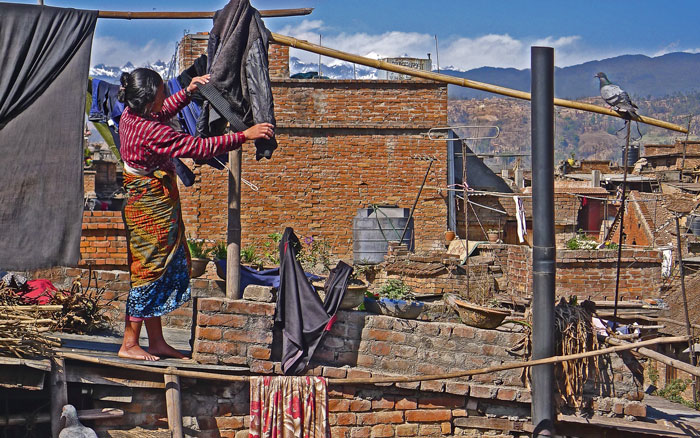 There's a lot going on up on the rooftops around Kathmandu–clotheslines and gardens and solar water heaters and stovepipes and a lot of other stuff beyond my understanding.
There's a lot going on up on the rooftops around Kathmandu–clotheslines and gardens and solar water heaters and stovepipes and a lot of other stuff beyond my understanding.
This scene was in Bhaktapur, capital city of one of the three ancient kingdoms of the Kathmandu valley, about half an hour's drive from Kathmandu proper. Americans might understand Bhaktapur as a sort of Nepalese Williamsburg, where old buildings and crafts and cultural traditions are consciously preserved and displayed for tourists. No cars are permitted in town. However, Bhaktapur is about a thousand years older than Williamsburg, and it was no colonial outpost; for hundreds of years, it was the political and religious center of a wealthy royal court, with palaces and temples on a grand scale.
In the late eighteenth century, Bhaktapur lost out to an even wealthier kingdom in Kathmandu, and today the 30,000 townspeople get by on tourism and pottery-making; the pottery specialty seems to be wide, low bowls designed for culturing yogurt. An art school in Bhaktapur teaches ancient Buddhist thenka painting, and a paper factory follows traditional paper-making technology utilizing the inner bark of the lokta bush.
Below, in one of Bakhtapur's central squares, a woman walks past a Hindu temple guarded by a god with a mustache.
cityscape
streetscape
Nepal
Kathmandu
rooftop
clothesline
statue
Mar 31, 2011
 For at least the past fifteen hundred years, Swayambhunath Temple atop a high hill west of Kathmandu–the Monkey Temple–has been a holy site for Buddhists and Hindus both.
For at least the past fifteen hundred years, Swayambhunath Temple atop a high hill west of Kathmandu–the Monkey Temple–has been a holy site for Buddhists and Hindus both.
Hundreds of pilgrims climb the hill every morning before dawn (we're told), up a flight of more than three hundred steps to reach a temple plaza guarded by wooden lions. As the sun rises, the faithful start circling the huge white-domed stupa with its golden spire, spinning prayer wheels as they greet the dawn beneath Buddha's all-seeing painted eyes. Tibetan Buddhists circle the stupa clockwise; Nepali Buddhists go counter-clockwise. There are lots of both.
In addition to the stupa, the Monkey Temple complex features numerous shrines and temples, a monastery, and vendors selling everything from strawberries and tiger balm to postcards and mandalas.
One of the most popular shrines is to a Hindu deity, Heriti, the goddess of smallpox and childhood diseases. Apparently, Heriti is a fertility goddess who developed a niche specialty: keeping children alive till the age of twelve and curing smallpox even in adults. Because divine protection of this sort is much in demand but Buddhism lacked a deity with expertise, Heriti was borrowed from the Hindus. At her shrine, people bring flowers and gifts, both to enlist her aid and to thank her for good work. A donations box has been set up directly in front of her statue.
The whole hill does swarm with monkeys. People who live nearby complain that monkeys venture out into the neighborhood and eat everything green in people's gardens.
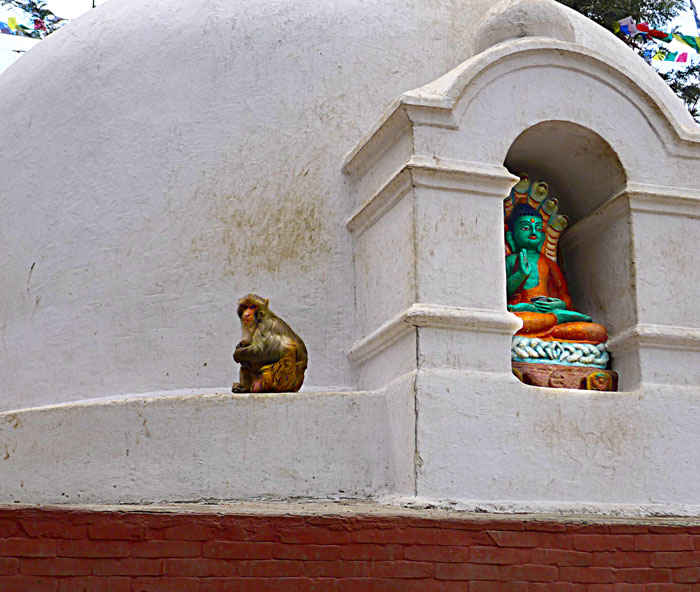

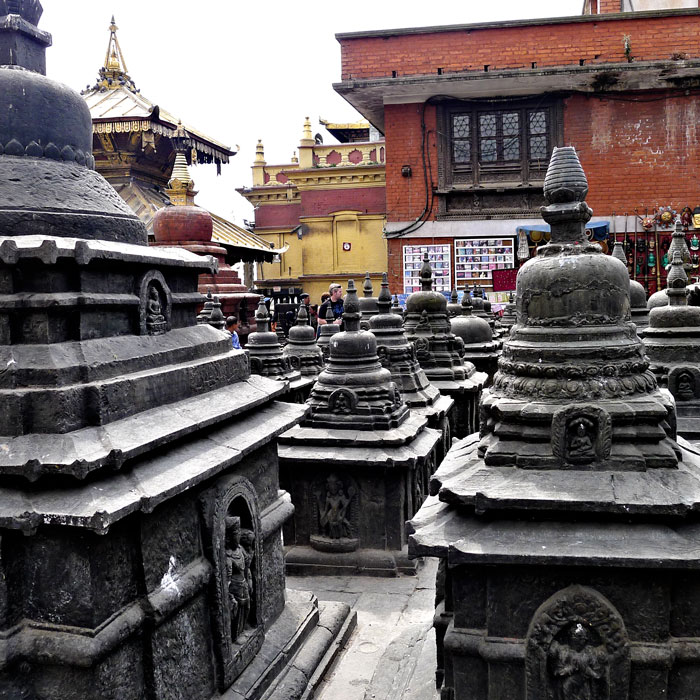
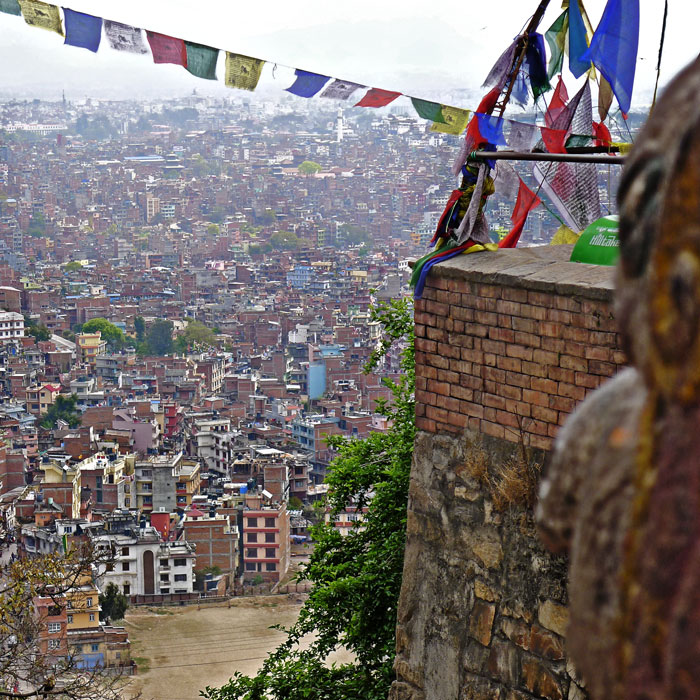
animals
Nepal
Kathmandu
Buddhism
Hinduism
Monkey Temple
religion
Swayambhunath Temple
Apr 1, 2011
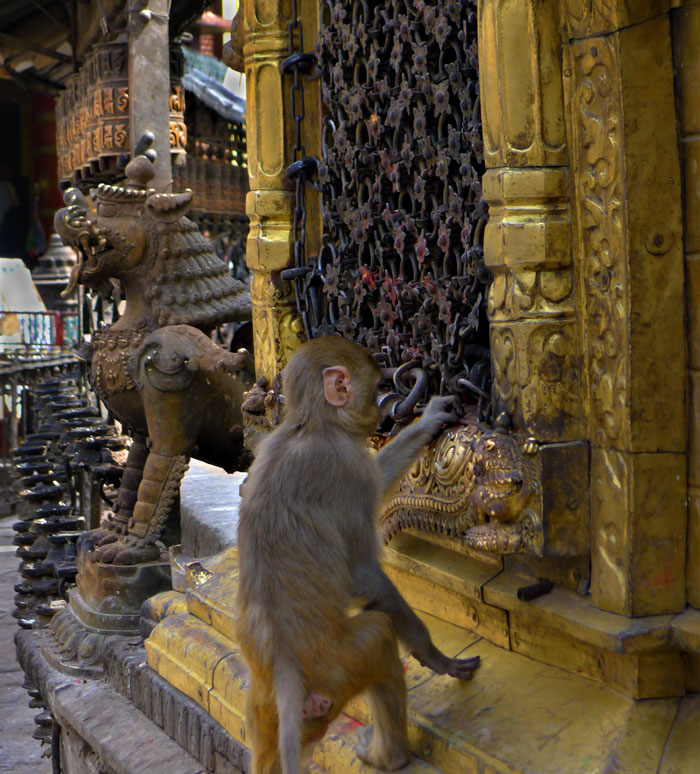
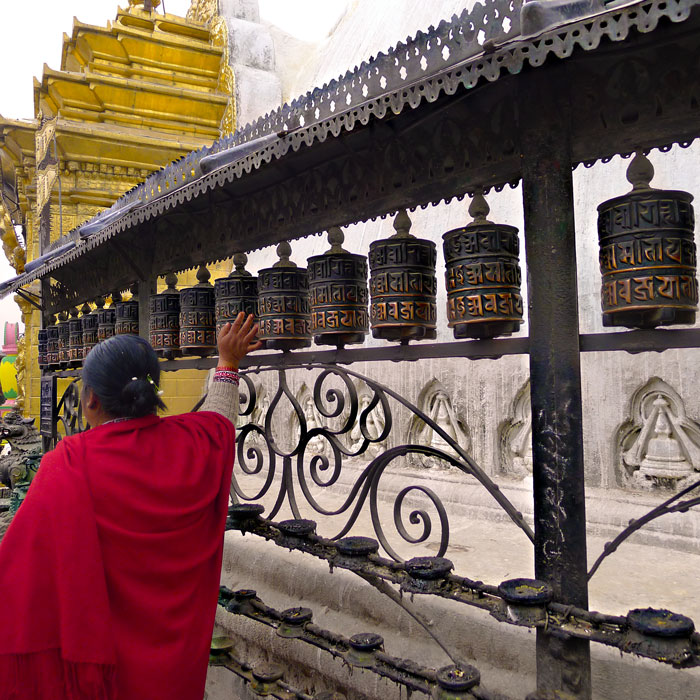

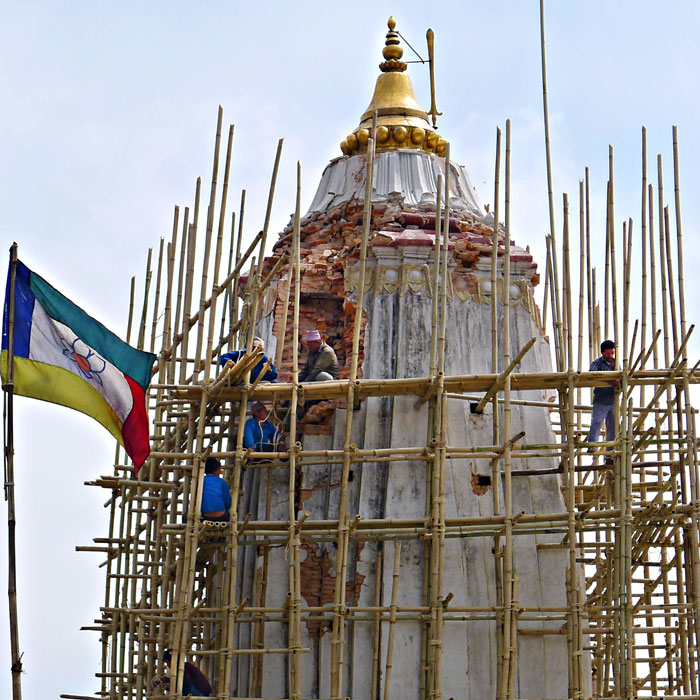
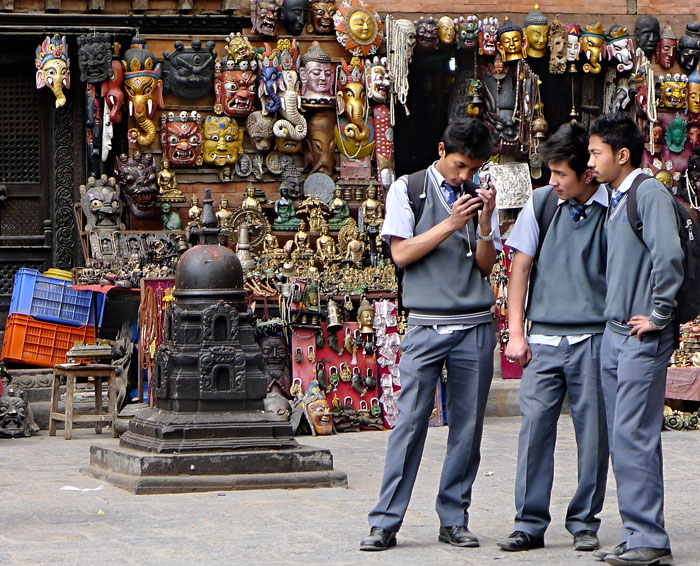
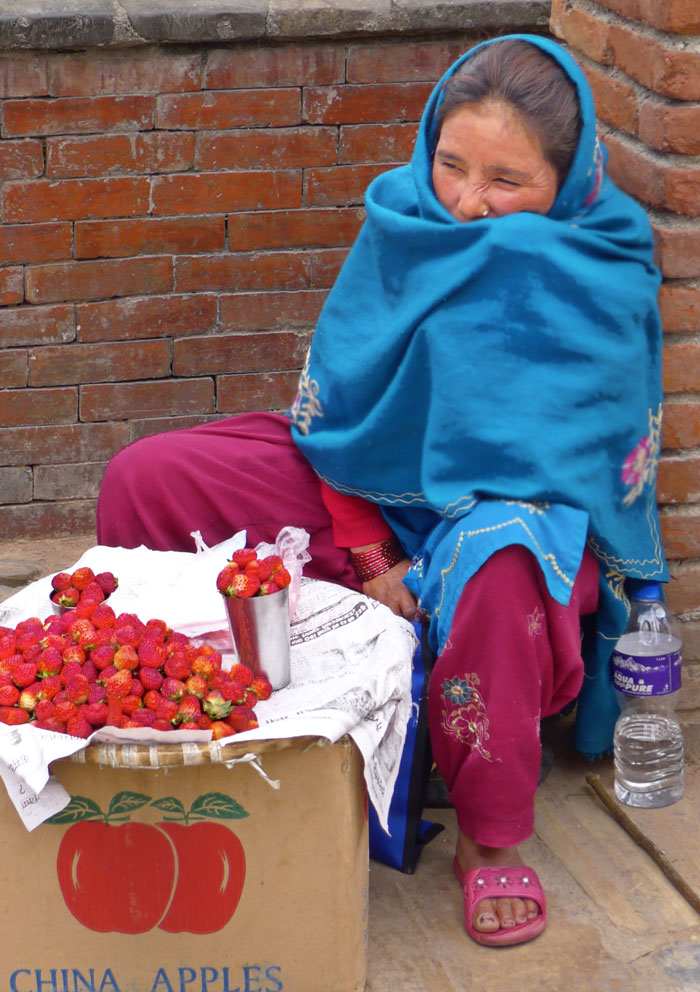
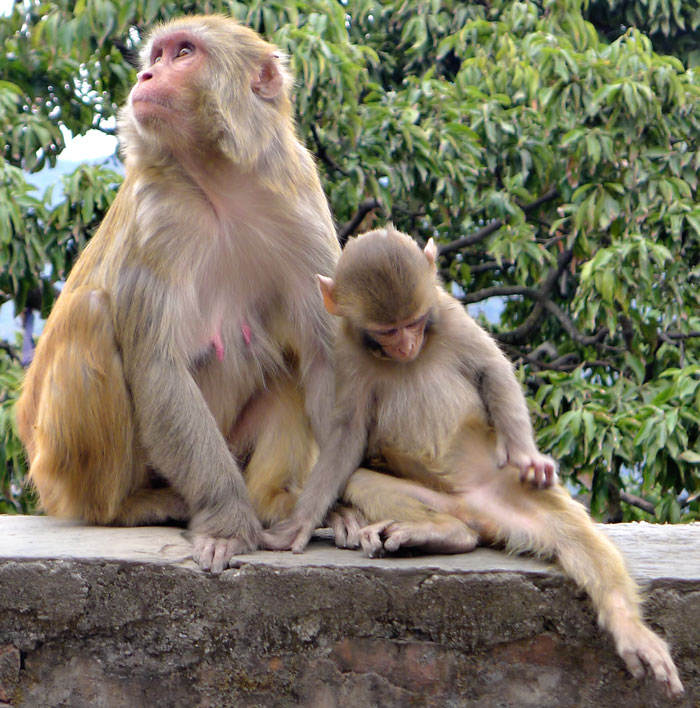
animals
Nepal
Kathmandu
Buddhism
Hinduism
religion
Apr 7, 2011
From my sister's collection of Kathmandu signs and posters: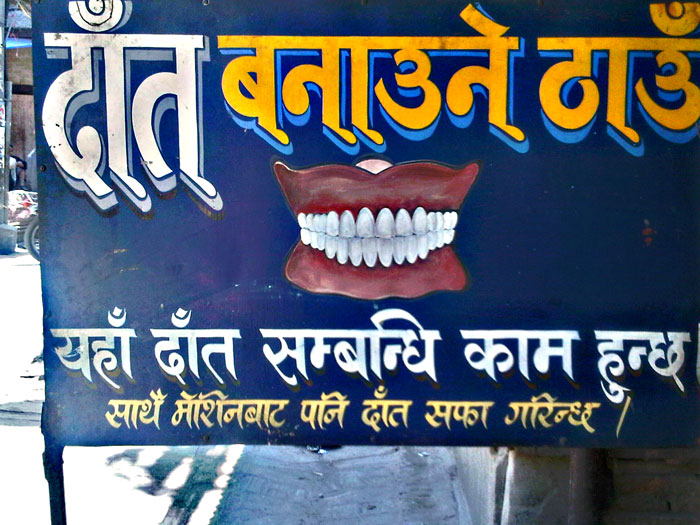
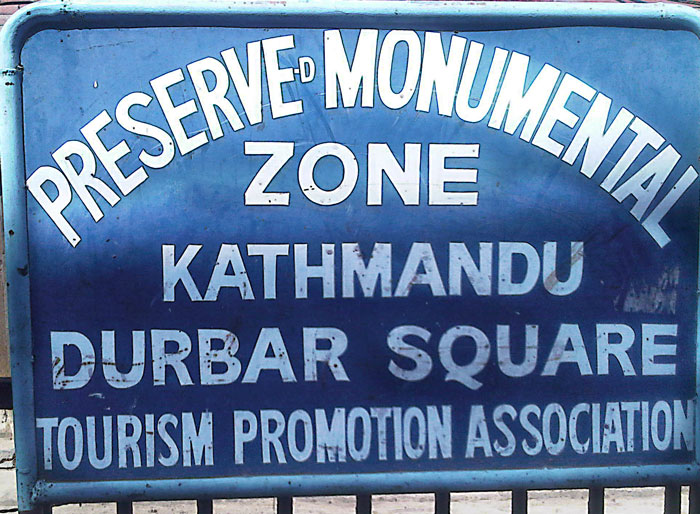
 The political poster reflects Nepal's very recent revolution, in which the king was overthrown for a parliamentary democracy. The leading party in parliament is the Maoists, but they didn't quite win a majority of seats; to govern, the Maoists had to form a coalition with the Marxist-Leninists. From what we heard, parliament wasn't doing much of anything and had repeatedly failed to write a constitution.
The political poster reflects Nepal's very recent revolution, in which the king was overthrown for a parliamentary democracy. The leading party in parliament is the Maoists, but they didn't quite win a majority of seats; to govern, the Maoists had to form a coalition with the Marxist-Leninists. From what we heard, parliament wasn't doing much of anything and had repeatedly failed to write a constitution.
Nepal's official communism does not seem to stop Nepalis from operating clearly capitalistic businesses, and the country is currently experiencing a heated real estate boom.
streetscape
Nepal
Kathmandu
signs
(Image credit: Carol Fuchs)
Apr 9, 2011
 An apartment courtyard in central Kathmandu. The tent at lower right may be for a wedding.
An apartment courtyard in central Kathmandu. The tent at lower right may be for a wedding.
cityscape
wedding
streetscape
Nepal
Kathmandu
Jun 25, 2011
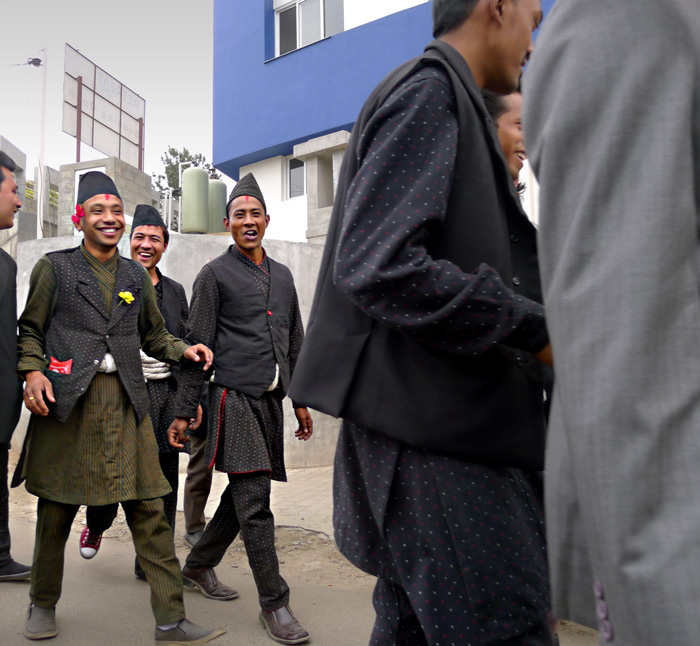
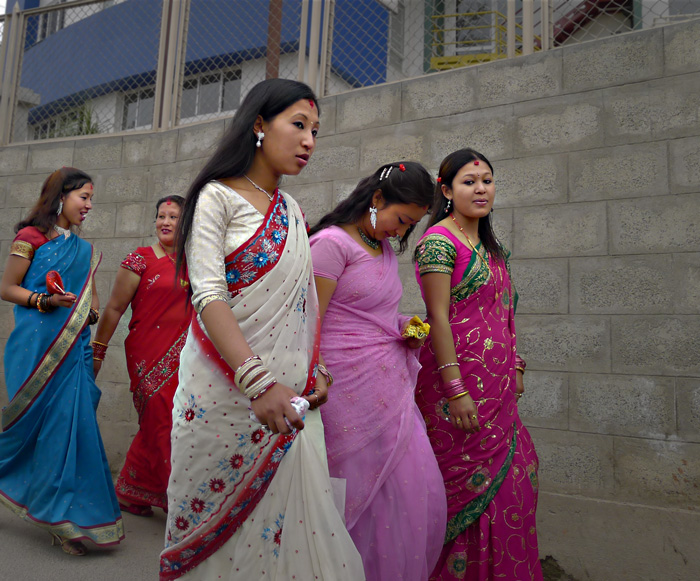 One afternoon in Kathmandu, we saw the men and then the women and then the car, all dressed up with clearly some place special to go. A recent wedding we heard about had twelve hundred guests, but all we saw of this one was the procession on the street, complete with a marching band. The band looked and sounded just like a western marching band and is not pictured here.
One afternoon in Kathmandu, we saw the men and then the women and then the car, all dressed up with clearly some place special to go. A recent wedding we heard about had twelve hundred guests, but all we saw of this one was the procession on the street, complete with a marching band. The band looked and sounded just like a western marching band and is not pictured here.
Nepalis claim they have more official holidays than any other country on earth. They know how to party.
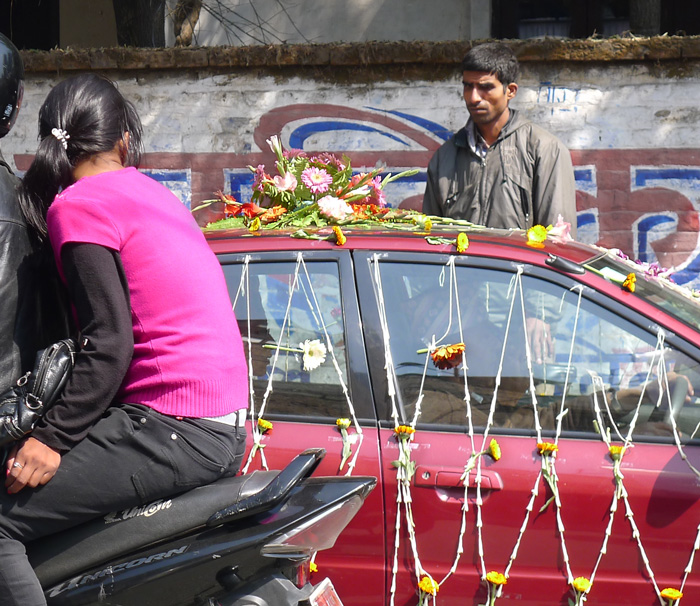
car
wedding
streetscape
Nepal
Kathmandu
Jul 10, 2011
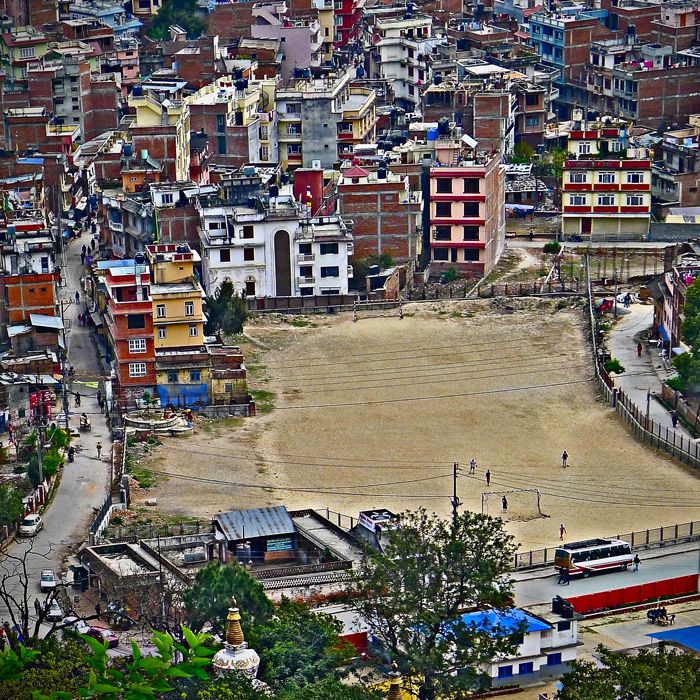 Soccer is popular in Nepal, even if the fields are more dirt than grass, and this year the national team, known as the Ghorkalis, is on a roll. Last week, Nepal notched two victories, 2-0 and then 5-0, in 2014 World Cup qualifying matches against East Timor. The Ghorkalis have a new coach, Graham Roberts, an Englishman who played for Tottenham and Chelsea, mostly on defense, and won six caps for England.
Soccer is popular in Nepal, even if the fields are more dirt than grass, and this year the national team, known as the Ghorkalis, is on a roll. Last week, Nepal notched two victories, 2-0 and then 5-0, in 2014 World Cup qualifying matches against East Timor. The Ghorkalis have a new coach, Graham Roberts, an Englishman who played for Tottenham and Chelsea, mostly on defense, and won six caps for England.
Meanwhile, in league play, defending champions Nepal Police Club holds a comfortable lead in the Martyrs Memorial Red Bull Division A, though Yeti Air Himalayan Sherpas Club is not out of the running.
The field shown here is in the suburbs of Kathmandu, at the base of the hill topped by the Monkey Temple.
sports
soccer
cityscape
birdseye view
Nepal
Kathmandu
view from Monkey Temple
 The guidebooks say that Nepal is a "quirky" place, where people use thousand-year-old statues to hold up their clotheslines. The guidebooks are right.
The guidebooks say that Nepal is a "quirky" place, where people use thousand-year-old statues to hold up their clotheslines. The guidebooks are right.





















